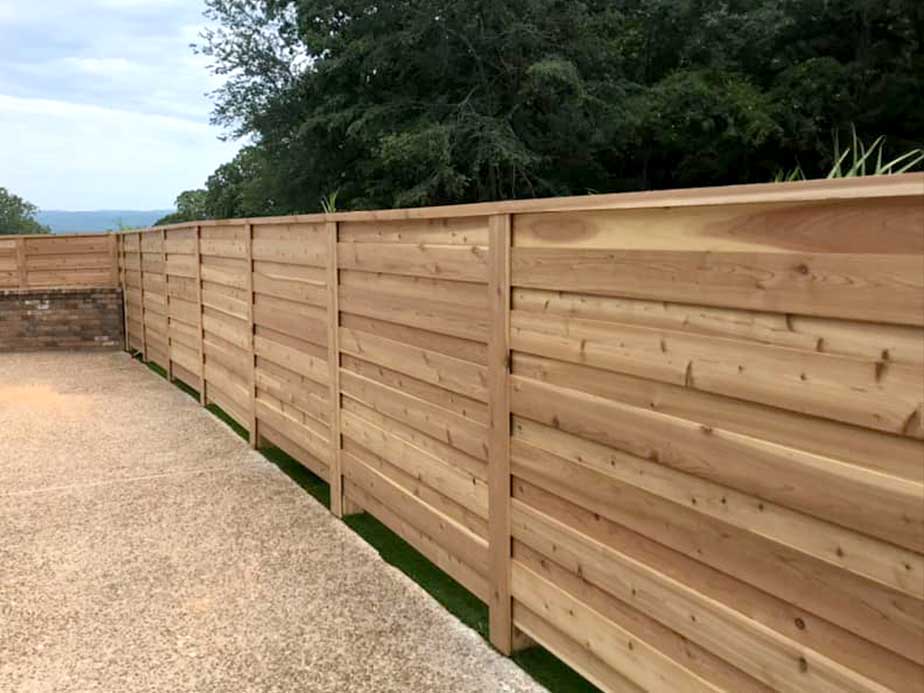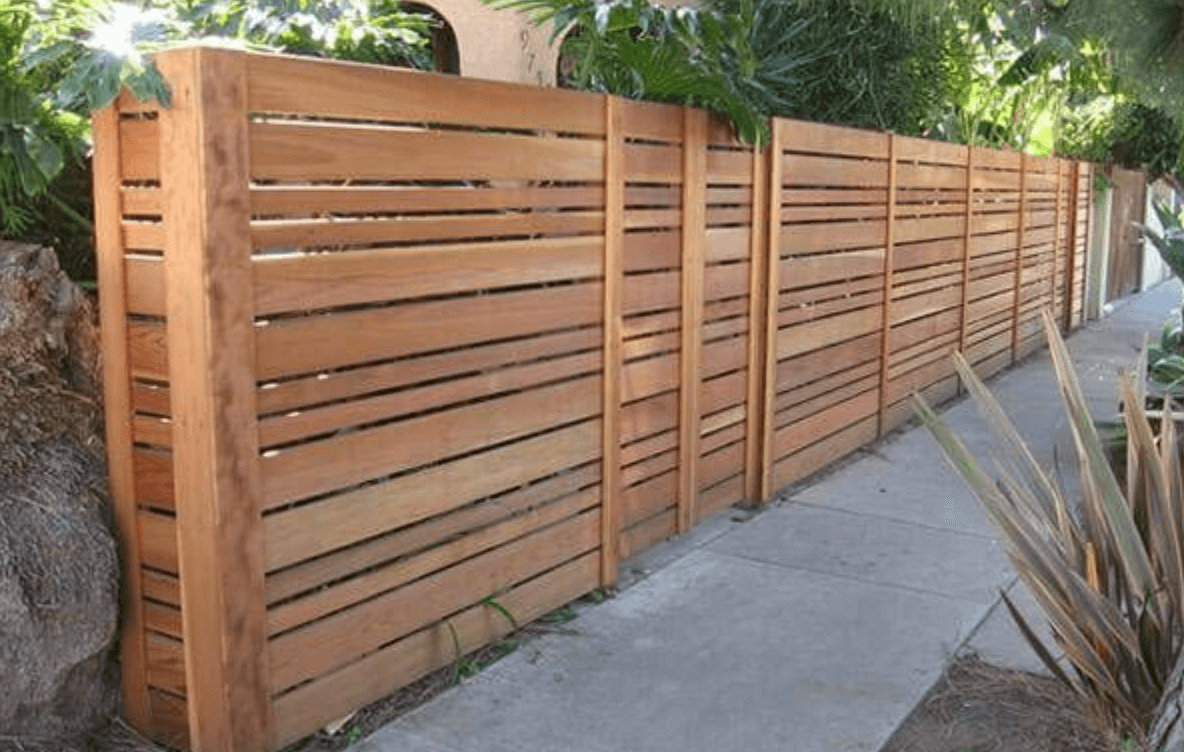All Categories
Featured
Fences not just define building boundaries however additionally improve the visual appeals and safety and security of your home. However, to guarantee their resilience and capability, routine upkeep is important. Various fencing products have distinct attributes that determine the type and regularity of maintenance they call for. Below is an overview to keeping different secure fencing materials properly.
Staining and securing: Use a sealant or timber discolor every 2-- 3 years to protect the wood from dampness and UV rays. Choose items with water-repellent and anti-fungal residential properties for included security. Cleaning: Remove mildew, dirt, and moss using a power washing machine or a soft brush with mild detergent. Tidy the fencing a minimum of annually. Repairs: Check for broken or deteriorating boards. Replace harmed planks immediately to avoid additional damage. Parasite Control: Watch out for termites or carpenter ants, particularly if the fence is unattended. Consider utilizing a wood preservative for added protection. 2. Vinyl Fences. Upkeep Demands:. Vinyl fencings are immune and low-maintenance to rot, parasites, and fading, however they still require periodic care to preserve their look.
![]()
Cleaning: Wash the fencing with soap and water to remove dirt and gunk. For persistent discolorations, utilize a soft brush and a vinegar remedy or a vinyl-safe cleaning item. Assessments: Look for breaks or fractures, specifically after storms or impacts. While plastic is long lasting, it can fracture under extreme pressure. Repair services: Change broken sections immediately to avoid architectural weakness. 3. Chain-Link Fences. Maintenance Needs:. Chain-link fences are cost-effective and resilient yet can be prone to rust and require normal cleaning to stay functional.
Corrosion Avoidance: Inspect the fencing regularly for rust, particularly in damp environments. Get rid of corrosion with a cable brush and apply a rust-resistant finishing or spray. Cleansing: Utilize a tube to clean off dirt and debris. For even more comprehensive cleansing, a scrub brush and soapy water can assist. Fixings: Tighten loosened web links or change broken areas without delay to keep security. 4. Wrought Iron Fences. Maintenance Demands:. Wrought iron fences are stylish and long-lasting but call for security from corrosion and weathering.
Corrosion Control: Look for corrosion areas and remove them with sandpaper or a wire brush. Use a rust-resistant primer and paint to prevent further rust. Cleansing: Usage water and light soap to clean up the fence on a regular basis, ensuring dust and crud don't gather. Paint: Paint every couple of years to maintain its look and supply an extra layer of defense. 5. Aluminum Fences. Upkeep Demands:. Light weight aluminum fencings are lightweight, rust-resistant, and need very little maintenance, making them a preferred option.
Cleansing: Clean down the fence with a soft towel or sponge utilizing soapy water. Rinse thoroughly to avoid deposit build-up. Inspections: Inspect for loose screws or panels and secure them promptly. Touch-Ups: Although aluminum resists corrosion, scratches may expose the steel below. Apply touch-up paint to stop oxidation. 6. Compound Fences. Upkeep Demands:. Composite fencings are constructed from wood fibers and plastic, integrating toughness with an all-natural look.
Cleaning: Use a garden hose pipe and a soft brush to cleanse the fence. Prevent harsh chemicals, as they can damage the composite product. Assessments: Look for warping or splits, specifically in locations subjected to severe temperature levels. Repair work: Replace harmed panels as needed to maintain structural honesty. 7. Bamboo Fences. Upkeep Needs:. Bamboo fencings provide an environmentally friendly option however are more fragile compared to various other products.
![]()
Sealing: Apply a water-resistant sealer to stop climate damages. Reseal every 2-- 3 years. Cleaning: Utilize a soft brush and soapy water to tidy dust and algae. Avoid too much water pressure, which can harm bamboo. Repair work: Change damaged or split bamboo poles as needed. Final thought. The maintenance requirements for your fence depend on the material you pick. Wooden fencings require one of the most upkeep due to their susceptibility to weather and insects, while materials like vinyl and light weight aluminum are reasonably low-maintenance. Routine inspections, cleaning, and timely fixings can expand the life of your fencing and ensure it continues to look excellent and offer the essential protection. By recognizing the specific demands of your fence material, you can maintain it in superb problem for many years ahead.
- Wood Fences. Maintenance Demands:. Wooden fences are traditional and deal natural charm, yet they require constant treatment to safeguard them from weather damages, parasites, and rot.
Staining and securing: Use a sealant or timber discolor every 2-- 3 years to protect the wood from dampness and UV rays. Choose items with water-repellent and anti-fungal residential properties for included security. Cleaning: Remove mildew, dirt, and moss using a power washing machine or a soft brush with mild detergent. Tidy the fencing a minimum of annually. Repairs: Check for broken or deteriorating boards. Replace harmed planks immediately to avoid additional damage. Parasite Control: Watch out for termites or carpenter ants, particularly if the fence is unattended. Consider utilizing a wood preservative for added protection. 2. Vinyl Fences. Upkeep Demands:. Vinyl fencings are immune and low-maintenance to rot, parasites, and fading, however they still require periodic care to preserve their look.

Cleaning: Wash the fencing with soap and water to remove dirt and gunk. For persistent discolorations, utilize a soft brush and a vinegar remedy or a vinyl-safe cleaning item. Assessments: Look for breaks or fractures, specifically after storms or impacts. While plastic is long lasting, it can fracture under extreme pressure. Repair services: Change broken sections immediately to avoid architectural weakness. 3. Chain-Link Fences. Maintenance Needs:. Chain-link fences are cost-effective and resilient yet can be prone to rust and require normal cleaning to stay functional.
Corrosion Avoidance: Inspect the fencing regularly for rust, particularly in damp environments. Get rid of corrosion with a cable brush and apply a rust-resistant finishing or spray. Cleansing: Utilize a tube to clean off dirt and debris. For even more comprehensive cleansing, a scrub brush and soapy water can assist. Fixings: Tighten loosened web links or change broken areas without delay to keep security. 4. Wrought Iron Fences. Maintenance Demands:. Wrought iron fences are stylish and long-lasting but call for security from corrosion and weathering.
Corrosion Control: Look for corrosion areas and remove them with sandpaper or a wire brush. Use a rust-resistant primer and paint to prevent further rust. Cleansing: Usage water and light soap to clean up the fence on a regular basis, ensuring dust and crud don't gather. Paint: Paint every couple of years to maintain its look and supply an extra layer of defense. 5. Aluminum Fences. Upkeep Demands:. Light weight aluminum fencings are lightweight, rust-resistant, and need very little maintenance, making them a preferred option.
Cleansing: Clean down the fence with a soft towel or sponge utilizing soapy water. Rinse thoroughly to avoid deposit build-up. Inspections: Inspect for loose screws or panels and secure them promptly. Touch-Ups: Although aluminum resists corrosion, scratches may expose the steel below. Apply touch-up paint to stop oxidation. 6. Compound Fences. Upkeep Demands:. Composite fencings are constructed from wood fibers and plastic, integrating toughness with an all-natural look.
Cleaning: Use a garden hose pipe and a soft brush to cleanse the fence. Prevent harsh chemicals, as they can damage the composite product. Assessments: Look for warping or splits, specifically in locations subjected to severe temperature levels. Repair work: Replace harmed panels as needed to maintain structural honesty. 7. Bamboo Fences. Upkeep Needs:. Bamboo fencings provide an environmentally friendly option however are more fragile compared to various other products.

Sealing: Apply a water-resistant sealer to stop climate damages. Reseal every 2-- 3 years. Cleaning: Utilize a soft brush and soapy water to tidy dust and algae. Avoid too much water pressure, which can harm bamboo. Repair work: Change damaged or split bamboo poles as needed. Final thought. The maintenance requirements for your fence depend on the material you pick. Wooden fencings require one of the most upkeep due to their susceptibility to weather and insects, while materials like vinyl and light weight aluminum are reasonably low-maintenance. Routine inspections, cleaning, and timely fixings can expand the life of your fencing and ensure it continues to look excellent and offer the essential protection. By recognizing the specific demands of your fence material, you can maintain it in superb problem for many years ahead.
Latest Posts
Why Pick Montana Fencing for Your Chain Web Link Secure Fencing Requirements
Published Apr 21, 25
1 min read
Accomplish Your Financial Desires with WyHy's Wealth Management Solutions
Published Apr 21, 25
1 min read
Auto Repair Services: Comprehensive Vehicle Maintenance & Repair Solutions !
Published Apr 21, 25
2 min read
More
Latest Posts
Why Pick Montana Fencing for Your Chain Web Link Secure Fencing Requirements
Published Apr 21, 25
1 min read
Accomplish Your Financial Desires with WyHy's Wealth Management Solutions
Published Apr 21, 25
1 min read
Auto Repair Services: Comprehensive Vehicle Maintenance & Repair Solutions !
Published Apr 21, 25
2 min read